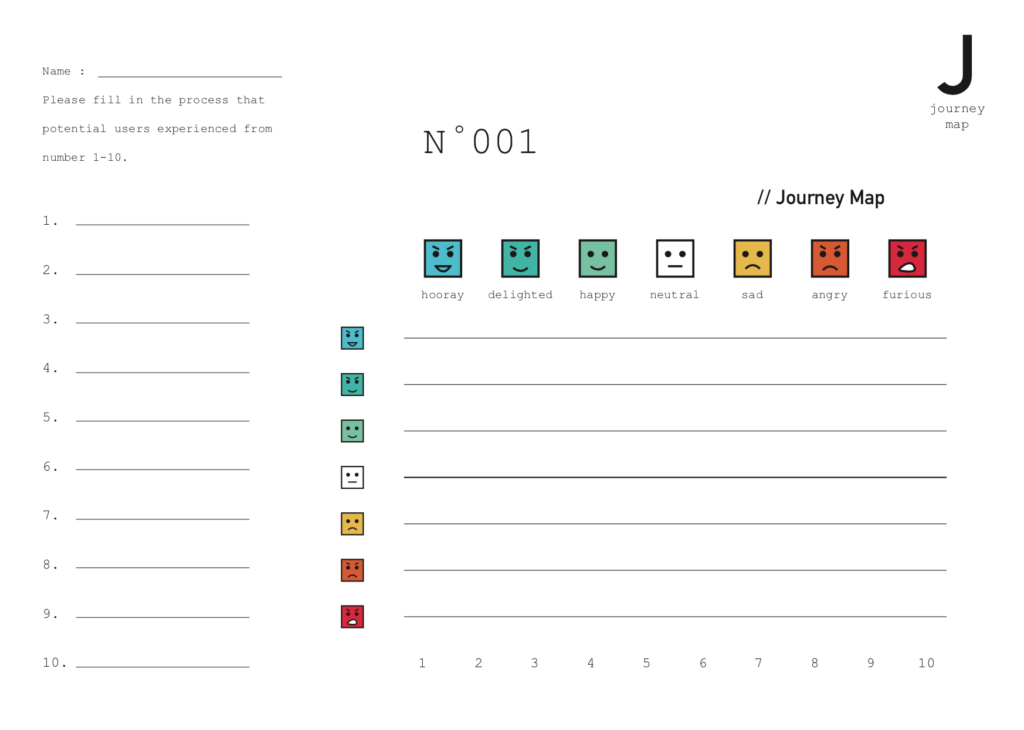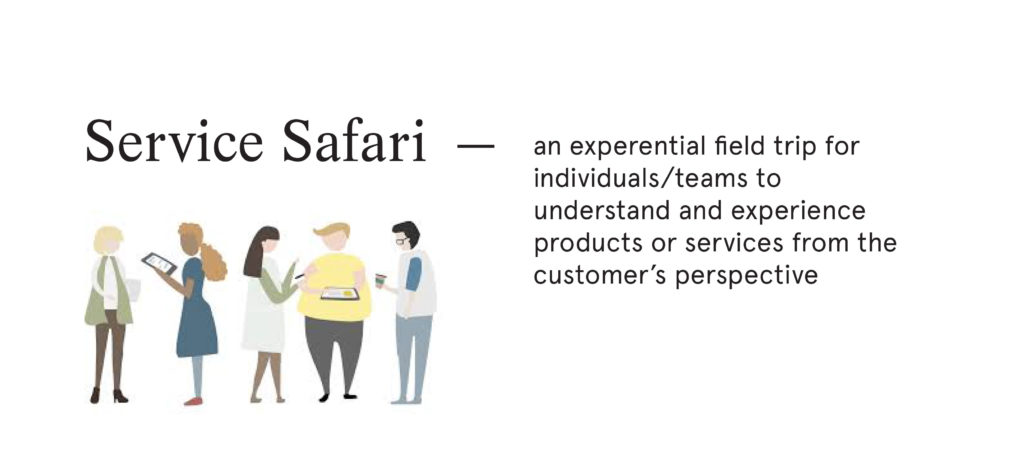Coming from a design strategy background, I always have a keen interest in one of the design thinking methodologies called Service Safari. Service safari is a prominent design methodology amongst service designers, but recently, UX researchers have also found this methodology quite useful. Service Safari is an exploration of service from a customer experience perspective. This methodology is best used at the very beginning of the design process to understand the real-world experience of a product, service, and product or service provided by competitors and collaborators in the industry.
By using service safari, researchers would be able to gain insight on real user’s pain points, opportunities in the market, and service benchmarks. It is crucial for strategists and UX designers to immerse themselves in using the service from the customer’s shoes. They will have a better understanding of what it feels like to be a customer, what frustration, concerns, and motivation that stops or drives them from using a product or service.
Before starting the Service Safari process, design researchers are recommended to have a stakeholder meeting to decide on the research objective, approach, and timeline. The meeting will also help researchers to be on the same page to plan on a specific service or journey to explore. The key to a clear objective is to pair a research question with a goal. e.g., We want to understand (how to create an extraordinary experience for users when they are going to a cinema). The research objective is used to understand the highs and lows (standards) of what a service and how each experience is being evaluated using those standards.
Having more than one researcher working on service safari is essential because each researcher can validate each other’s findings. Service safari is usually conducted by a small team of two to four researchers. The duration of a service safari can last from a day, weeks, or even a month, depending on the chosen product/service and the research objective.
Once researchers have a clear objective, they should decide on what service or product that they would investigate, it can also be the brand’s competitors and collaborators. Creating a planned scenario is also recommended so that researchers will not wander too far away from the research objective. Each scenario should include:
- What users are looking or trying to do, and why?
- What interactions will they encounter during the process?
- What is the end goal of the journey?
As researchers are conducting the service safari, they should document their findings by using a camera, notebook, or a service safari spreadsheet. Documentation is vital for stakeholders to understand each pattern, pain point, and opportunity found during the research. At the end of the process, the researcher can create an analysis and report based on their notes and documentations. The output of the research can be a journey map or post-it notes on an affinity map. From my previous experience in conducting a service safari, I prefer a journey map to outline all the pain points and opportunities discovered during the research. It is also a great way to synthesize findings from other researchers and gain deeper insights.

To conclude this, service safari is a fast and easy-to-use design methodology for stakeholders to understand where their service or product stands in the market. However, this method should not be a substitute for user research; nevertheless, it can be used as a supplementary research approach.
Sources:
https://www.100open.com/toolkit_2/service-safari/
https://blog.prototypr.io/how-why-and-when-to-run-a-successful-service-safari-accbf8f32e55
